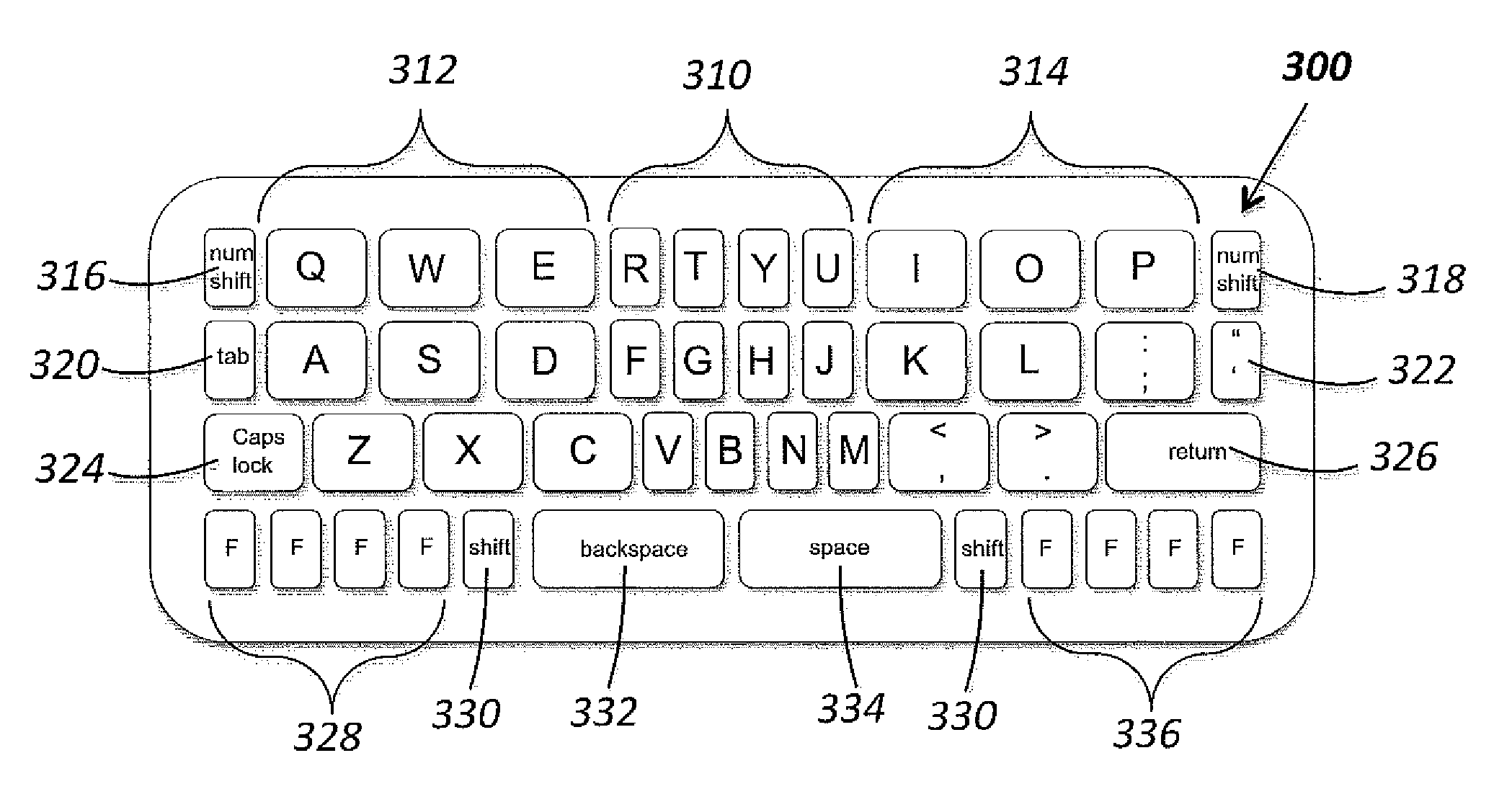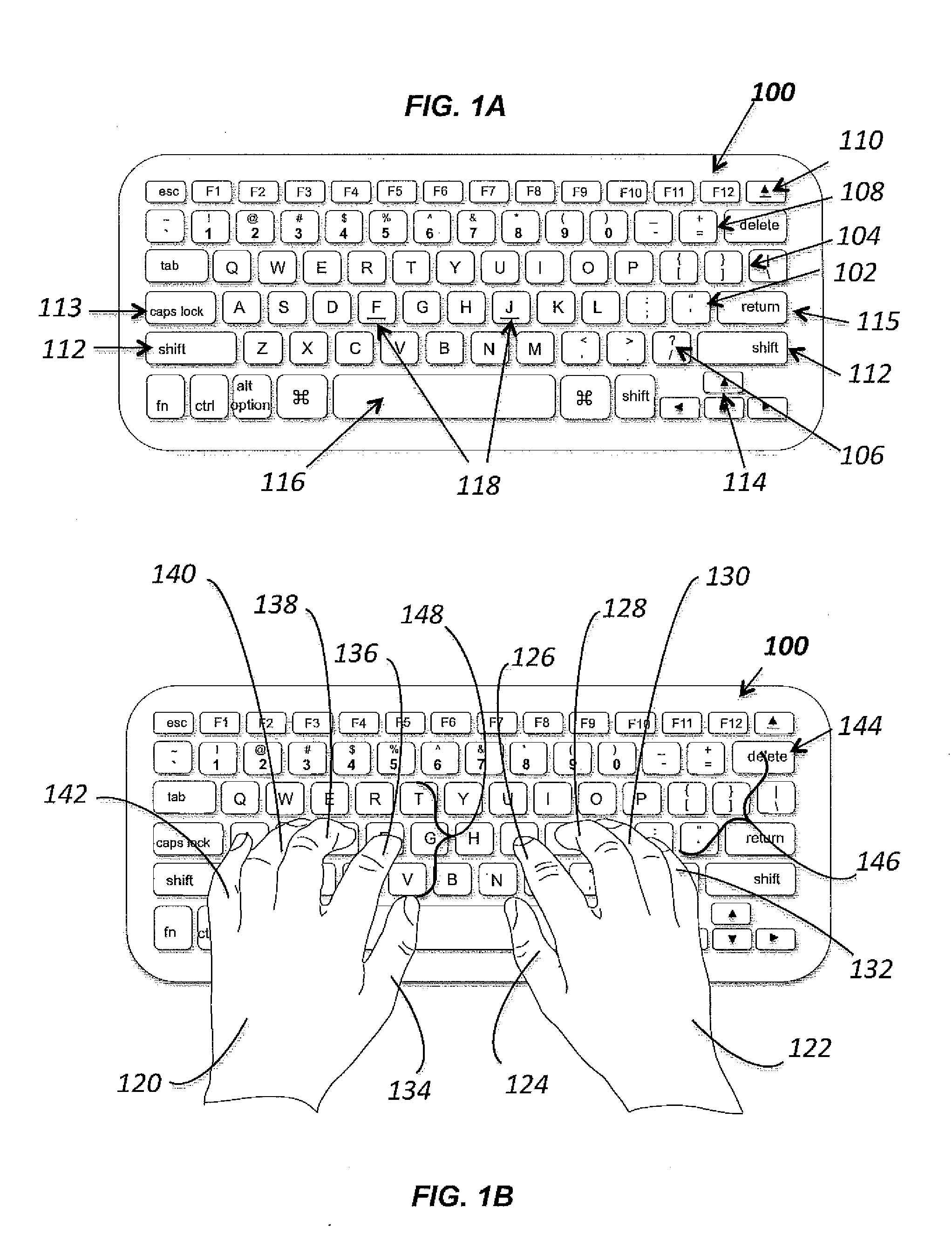Portable and ease-of-use ergonomic keyboard
a keyboard and ergonomic technology, applied in the field of ergonomic keyboards, can solve the problems of difficult to reach the frequently used keys, require significant reach, and suffer from numerous shortcomings of conventional keyboards, and achieve the effect of reducing errors, facilitating greater reach length, and reducing errors
- Summary
- Abstract
- Description
- Claims
- Application Information
AI Technical Summary
Benefits of technology
Problems solved by technology
Method used
Image
Examples
Embodiment Construction
[0050]In a preferred embodiment of the present invention, FIG. 3A features a significantly smaller computer-type keyboard 300 with keys varying in size based on the finger's area of movement. The keyboard may, for example, be modeled after the standard and ubiquitous QWERTY keyboard, but modified such that key size is based on their respective hand and finger movement. The preferred keyboard is also reduced to reflect the decreasing size and increasing use of computer-type instruments such as laptops, notebooks, PDA's and mobile phones. Such a keyboard may advantageously increase the overall ease-of-use and portability compared to existing conventional keyboards.
[0051]More specifically, in one aspect of the invention, a keyboard is presented in FIG. 3 consist of a plurality of different sized keys. In other words, FIG. 3 shows an embodiment of the present invention with three different sizes of alphanumeric and function keys. Unlike other referenced key modifications, each key size ...
PUM
| Property | Measurement | Unit |
|---|---|---|
| size | aaaaa | aaaaa |
| horizontal width | aaaaa | aaaaa |
| horizontal width | aaaaa | aaaaa |
Abstract
Description
Claims
Application Information
 Login to View More
Login to View More - R&D
- Intellectual Property
- Life Sciences
- Materials
- Tech Scout
- Unparalleled Data Quality
- Higher Quality Content
- 60% Fewer Hallucinations
Browse by: Latest US Patents, China's latest patents, Technical Efficacy Thesaurus, Application Domain, Technology Topic, Popular Technical Reports.
© 2025 PatSnap. All rights reserved.Legal|Privacy policy|Modern Slavery Act Transparency Statement|Sitemap|About US| Contact US: help@patsnap.com



